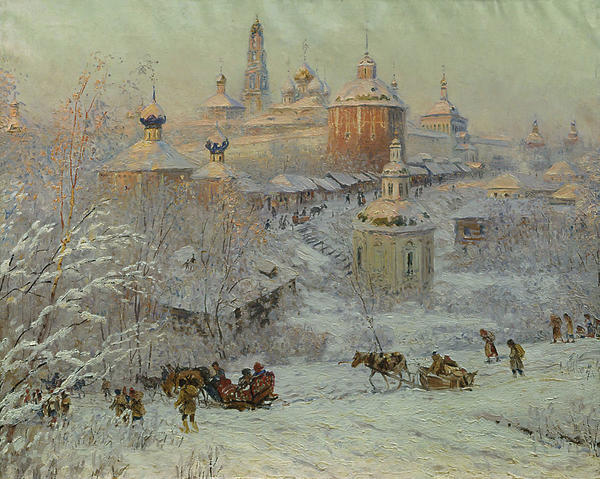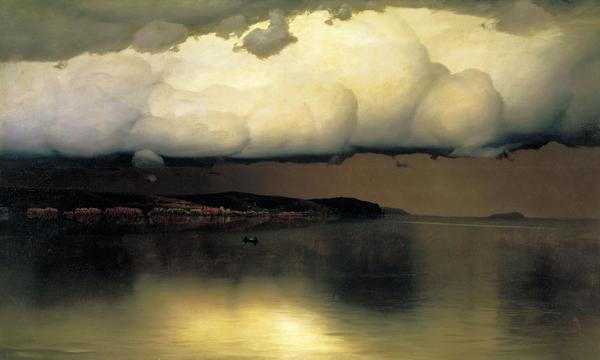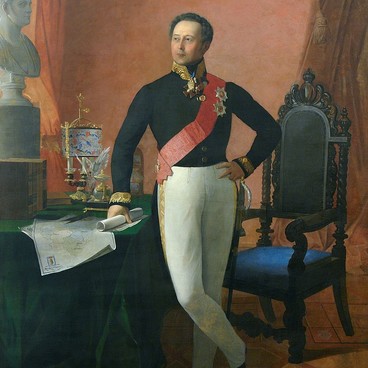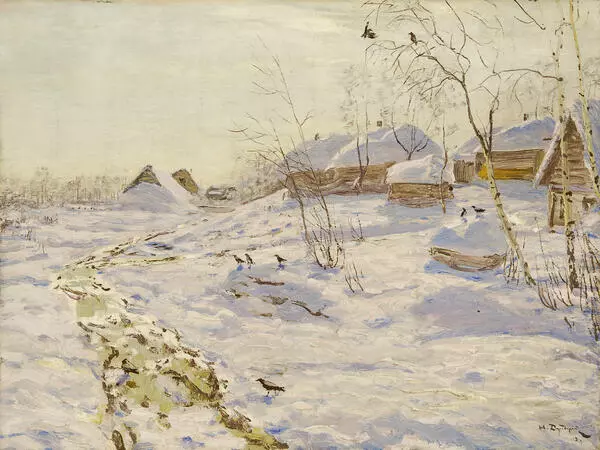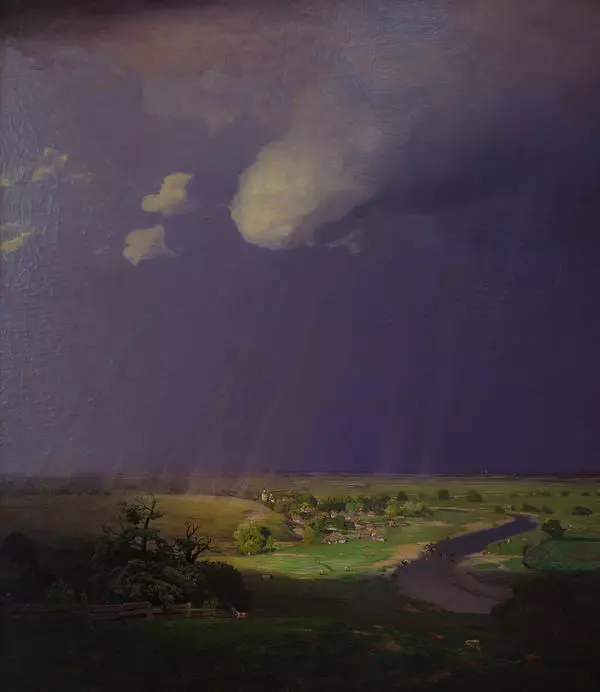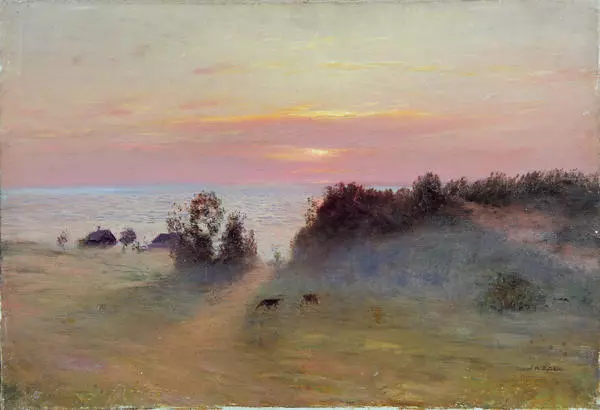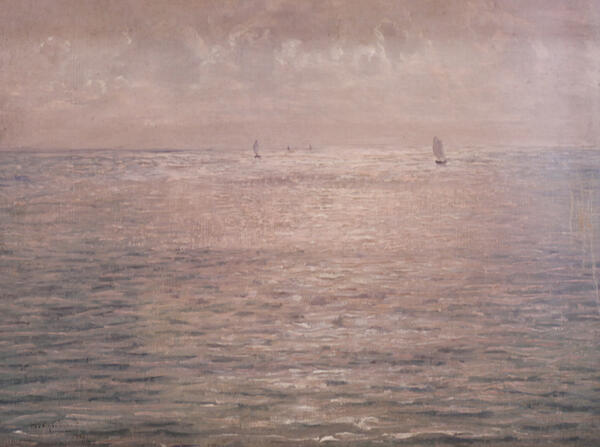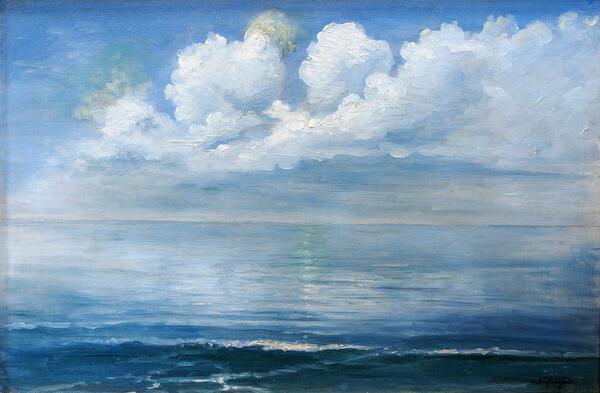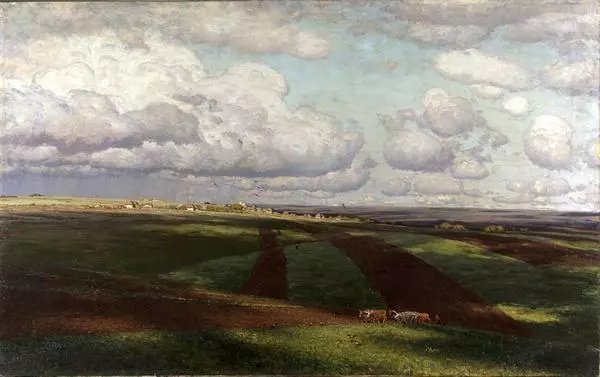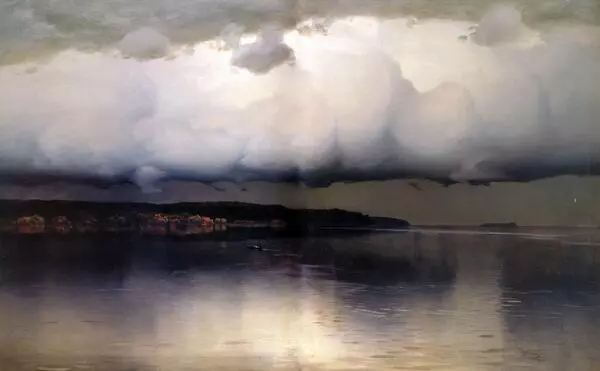Nikolay Dubovskoy painted ‘A Winter Day at Holy Trinity – St. Sergius Lavra’ in 1910. In thе painting, the author captured the state of nature and the cathedral as they were while he was working on it. Using thick paint strokes he painted spots of sunlight on the domes, snow stuck to the trees and the vibrating facets of the Assumption Cathedral. Dubovskoy did not seek to picture the building’s architecture in detail. For this work, the artist chose translucent, white tones to convey the uplift he felt looking at the cathedral sparkling under the snow.
By 1910, Nikolai Dubovskoy was already familiar with works by French impressionists. The painting “A Winter Day at Holy Trinity – St. Sergius Lavra” shows their influence: the author worked en plein air, paid special attention to capturing the effects of light and tried to fill the painting with air. It was his way of conveying his impressions of a particular winter day. All these techniques were part of the new style.
Nikolay Dubovskoy joined the Association for Itinerant Art Exhibitions (The Itinerants) in 1884. The Society fought against academic monopoly in arts. Until the mid-19th century, the Imperial Academy of Arts imposed long-obsolete rules of classicism and romanticism on artists. It dictated “permissible” subjects, “appropriate” compositions and “befitting” colour combinations for paintings. “Proper” paintings generally included historical portraits, battle scenes, mythological paintings. Landscapes mostly served as backgrounds for instructive stories. The Itinerants shared ideas contrary to those propagated by the Academy: they wanted to show real life in Russia, paint their pictures on the subjects they were interested in, use painting techniques they found appropriate. Nikolai Dubovskoy developed these views in landscape painting.
Dubovsky is the author of about four hundred paintings. Three of them feature the Holy Trinity – St. Sergius Lavra. Aside from “A Winter Day at Holy Trinity – St. Sergius Lavra”, he painted “The Lavra in the Winter” in 1910, and seven years later, “At the Monastery. Holy Trinity – St. Sergius Lavra”. The artist pictured the same season and place in all those canvases, except that in his later work he featured the monastery’s entire architectural complex with the five-domed Assumption Cathedral in the background.
By 1910, Nikolai Dubovskoy was already familiar with works by French impressionists. The painting “A Winter Day at Holy Trinity – St. Sergius Lavra” shows their influence: the author worked en plein air, paid special attention to capturing the effects of light and tried to fill the painting with air. It was his way of conveying his impressions of a particular winter day. All these techniques were part of the new style.
Nikolay Dubovskoy joined the Association for Itinerant Art Exhibitions (The Itinerants) in 1884. The Society fought against academic monopoly in arts. Until the mid-19th century, the Imperial Academy of Arts imposed long-obsolete rules of classicism and romanticism on artists. It dictated “permissible” subjects, “appropriate” compositions and “befitting” colour combinations for paintings. “Proper” paintings generally included historical portraits, battle scenes, mythological paintings. Landscapes mostly served as backgrounds for instructive stories. The Itinerants shared ideas contrary to those propagated by the Academy: they wanted to show real life in Russia, paint their pictures on the subjects they were interested in, use painting techniques they found appropriate. Nikolai Dubovskoy developed these views in landscape painting.
Dubovsky is the author of about four hundred paintings. Three of them feature the Holy Trinity – St. Sergius Lavra. Aside from “A Winter Day at Holy Trinity – St. Sergius Lavra”, he painted “The Lavra in the Winter” in 1910, and seven years later, “At the Monastery. Holy Trinity – St. Sergius Lavra”. The artist pictured the same season and place in all those canvases, except that in his later work he featured the monastery’s entire architectural complex with the five-domed Assumption Cathedral in the background.


